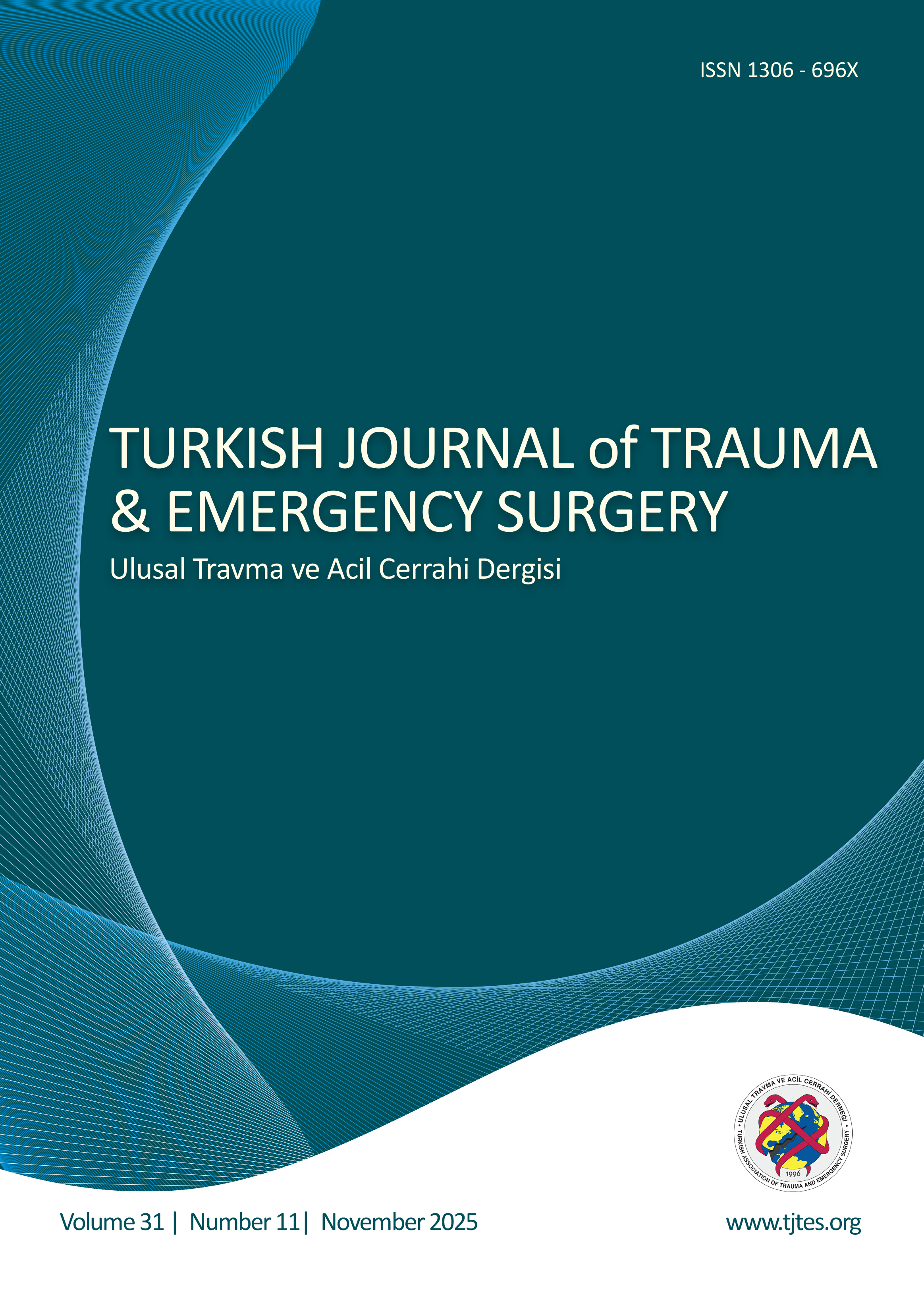Quick Search
Traumatic subarachnoid hemorrhage: a prospective study of 58 cases
Ali İhsan Ökten1, Yurdal Gezercan1, Rüçhan Ergün21Department Of Neurosurgery Adana Numune Hospital, Adana, Turkey21st Department Of Neurosurgery Ssk Dışkapı Training And Research Hospital, Ankara, Turkey
BACKGROUND: We evaluated the prognostic factors in traumatic subarachnoid hemorrhage (tSAH).
METHODS: This study was conducted with 58 patients (44 males, 14 females; mean age 39.2; range 17 to 79 years) with tSAH, between 2001 and 2003. The patients who were admitted to the hospital within in the first 6 hours of head injury were included, whereas patients with gun shot wounds, multiple injured patients and postoperative patients were excluded. Fifty-eight patients with tSAH were prospectively followed. The neurological status of the patients and the outcomes were evaluated using Glasgow Coma Scale (GCS) and Glasgow Outcome Scale (GOS), respectively and computed tomography (CT) examinations were done according to the grading criteria by Hijdra and Fisher.
RESULTS: The etiology of tSAH included traffic accidents (73%), falls (20%) and others (7%). The GCS scores of patients at admission were mild (9%), moderate (39%) and severe (52%). In the CT scans, the amount and distribution of bleeding was grade 1 (small SAH) in 21 patients, grade 2 (moderate SAH) in 17 patients, and grade 3 (extensive SAH) in 20 patients according to Hijdra grading system and according to Fisher's criteria. The thickness of blood layer was grade 1 (no blood) in 6 patients, grade 2 (bleeding layer less than 1 mm) in 21 patients, grade 3 (bleeding layer more than 1 mm) in 15 patients and grade 4 (ventricular bleeding) in 16 patients. Neurological outcomes of patients were favorable (good recovery or moderate disability) in 59%, and unfavorable (severe disability, persistent vegetative state or death) in 41% according to GOS.
CONCLUSION: We have found in our series that the prognosis was poor in patients with poor admission scores of GCS, cysternal or fissural hemorrhage, tSAH with cerebral contusion or acute subdural hematoma, higher than 13 points according to Hidjra's classification and patients of grade 3 or 4 in Fisher's criteria.
Keywords: Head injuries, subarachnoid hemorrhage/mortality/prognosis/radiography, survival rate; tomography, X-ray computed
Travmatik subaraknoid kanamalar: 58 olguluk prospektif çalışma
Ali İhsan Ökten1, Yurdal Gezercan1, Rüçhan Ergün21S.B. Adana Numune Hastanesi Nöroflirürji Kliniği, Adana, Türkiye2SSK Dışkapı Eğitim ve Araştırma Hastanesi, 1. Nöroflirürji Kliniği, Ankara, Türkiye
AMAÇ: Bu çalışmada travmatik subaraknoid kanamalarda (tSAK) prognozu etkileyen faktörlerin incelenmesi amaçlandı.
GEREÇ-YÖNTEM: Bu prospektif çalışmaya 2001-2003 yılları arasında tedavi edilen 58 tSAKlı hasta (44 erkek, 14 kadın; ort. yaş 39.2; dağılım 17-79 yıl) alındı. Çalışmamıza travma sonrası ilk altı saat içerisinde başvuran hastalar dahil edildi; ateşli silah yaralanmaları, multitravmalı ve ameliyat edilen hastalar çalışma dışında tutuldu. Hastaların nörolojik değerlendirmesi Glasgow Koma Ölçeğine (GKÖ), sonuçlar Glasgow Sonuç Ölçeğine (GSÖ), bilgisayarlı tomografi (BT) incelemeleri ise Hijdra ve Fisher kriterlerine göre değerlendirildi.
BULGULAR: Travmatik subaraknoid kanamaların etyolojisini en sık trafik kazaları (%73) ve düşme (%20) oluşturuyordu. Olguların hastaneye ilk geliş durumları GKÖne göre %9u hafif, %39u orta, %52si şiddetli travma olarak değerlendirildi. Hijdra derecelendirmesine göre BTdeki kan miktarı ve dağılımı: 21 hastada 1. derece (az miktarda kan), 17 hastada 2. derece (orta miktarda kan), 20 hastada 3. derece (aşırı miktarda kan); Fisher kriterlerine göre pıhtı kalınlığı: 6 hastada 1. derece (kan yok), 21 hastada 2. derece (diffüz kanama), 15 hastada 3. derece (pıhtı kalınlığı 1 mm veya daha fazla kan), 16 hastada 4. derece (ventriküler kanama) olarak saptandı. GSÖne göre hastaların %59unda sonuçlar kabul edilebilir (tam iyileşme, orta derece sakatlık), %41inde ise kötü (ciddi derecede sakatlık, vejetatif tablo, ölüm) bulundu.
SONUÇ: Çalışmamızda; giriş GKÖ skoru düşük olanlarda, sistern ve fissürlerde kanaması olanlarda, tSAK ile birlikte serebral kontüzyon veya akut subdural hematomu bulunanlarda, Hijdra kriterlerine göre aşırı miktarda kan birikmesi olanlarda (13 puan ve üzeri) ve Fisher derecelendirmesine göre 3. ve 4. derecede olanlarda prognozun daha kötü olduğu sonucuna varıldı.
Anahtar Kelimeler: Kafa travması, subaraknoid kanama/mortalite/ prognoz/radyografi; sağkalım oranı; tomografi, X-ışını kompüterize
Manuscript Language: Turkish




